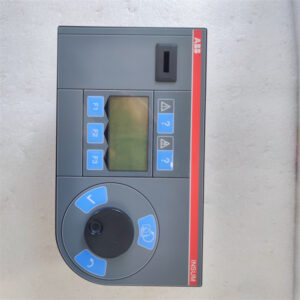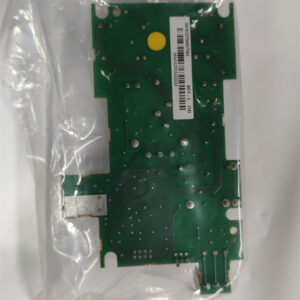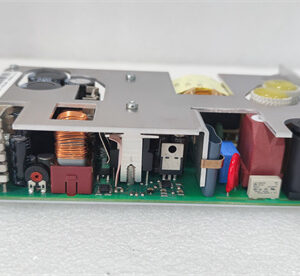Description
1. Product overview
The BENTLY 126599 – 01 is a pivotal component within BENTLY’s comprehensive machinery monitoring portfolio, specifically an I/O module tailored for the 3500/44M aeroderivative GT vibration monitor system. This module plays a crucial role in the accurate and efficient acquisition, processing, and transmission of vibration data from rotating machinery, such as aeroderivative gas turbines. In high – performance industrial applications where the integrity and optimal operation of gas turbines are of utmost importance, like in power generation plants using advanced gas – fired turbines or in the aerospace industry for auxiliary power units, the 126599 – 01 ensures that real – time and reliable vibration information is available. It serves as a bridge between the various sensors, such as velomitor sensors and accelerometers, and the main monitoring system, enabling continuous surveillance of the machinery’s health. By precisely measuring and relaying vibration data, it helps in early detection of potential mechanical issues, thereby preventing costly breakdowns and ensuring smooth and efficient operation of the critical equipment.
2. Parameter list
| Parameter name | Parameter value |
| Product model | 126599 – 01 |
| Manufacturer | BENTLY NEVADA |
| Product category | I/O module for 3500/44M aeroderivative GT vibration monitor system |
| Compatibility | Seamlessly integrates with the BENTLY NEVADA 3500/44M aeroderivative GT vibration monitor system. It is designed to interface with velomitor sensors and accelerometers through BENTLY NEVADA interface modules, ensuring a unified and reliable data – collection network for vibration monitoring. |
| Dimensions | 241.3 mm (height) x 24.4 mm (width) x 99.1 mm (depth), presenting a compact form factor that allows for easy installation within the monitoring system’s rack. This size is optimized to fit into standard equipment enclosures without taking up excessive space, facilitating a neat and organized setup. |
| Weight | 0.45 kg (1.0 lb), lightweight which not only simplifies the installation process but also reduces the overall load on the mounting structure. The low weight ensures that it can be easily handled during installation, maintenance, and any potential replacement procedures. |
| Rack space requirements | Occupies 1 full – height rear slot in the relevant monitoring system’s rack. This standardized slot usage makes it compatible with the overall architecture of the 3500 series systems, enabling straightforward integration and expansion as needed. |
| Input/Output channels | The number of channels can be configured based on the specific application requirements. This flexibility allows for customization, whether it’s for a small – scale turbine setup with a few sensors or a large – scale industrial installation with multiple sensors monitoring different aspects of the machinery. |
| Communication protocol | Employs a proprietary BENTLY NEVADA protocol, which is engineered to provide secure, high – speed, and reliable data transfer. This protocol is optimized for the specific needs of machinery vibration monitoring, ensuring that the data transmitted between the module, sensors, and the main monitoring unit is accurate and timely. |
| Frequency response | – Direct signal: 4 Hz to 30,000 Hz (-3 dB). This wide frequency range enables the module to capture both low – frequency and high – frequency vibrations, which are crucial for detecting different types of mechanical issues. For example, low – frequency vibrations may indicate long – term wear or misalignment, while high – frequency vibrations could be a sign of immediate problems like bearing defects. – Integrated velocity: 18 Hz to 5500 Hz (-3 dB). This range is specifically tuned to measure the velocity – based vibrations, providing valuable information about the dynamic behavior of the rotating machinery. – Non – integrated acceleration: 4 Hz to 30,000 Hz (-3 dB). The ability to measure non – integrated acceleration allows for a more detailed analysis of the sudden shocks and high – frequency impacts on the machinery. – Integrated acceleration: 18 Hz to 14,500 Hz (-3 dB). This integrated acceleration measurement range is useful for understanding the overall acceleration patterns and trends in the machinery’s operation. – Bias low – pass filter: 0.01 Hz (-3 dB). The low – pass filter helps in removing high – frequency noise and interference, ensuring that the data received is clean and accurate for analysis. |
| Bandpass filter | – Low – pass cut – off frequency: Configurable between 100 Hz and 5500 Hz (-3 dB). This adjustability allows users to set the appropriate frequency range for filtering out unwanted high – frequency components, depending on the specific characteristics of the machinery and the types of vibrations being monitored. – High – pass cut – off frequency: Configurable between 10 Hz and 1000 Hz (-3 dB). Similarly, the high – pass filter can be adjusted to remove low – frequency noise and focus on the relevant vibration frequencies. – Roll – off: 8 – pole 160 dB per decade, 48 dB per octave. The steep roll – off characteristics of the filter ensure that the unwanted frequencies are effectively attenuated, leaving only the desired vibration signals for analysis. |
| Tracking filter | – Constant Q user – configurable. This feature allows for fine – tuning of the filter’s performance based on the specific operating conditions of the machinery. For example, in a gas turbine with variable operating speeds, the constant Q can be adjusted to optimize the tracking of vibration frequencies corresponding to different rotational speeds. – Roll – off: 6 – pole 120 dB per decade, 36 dB per octave. The tracking filter’s roll – off characteristics help in isolating the specific vibration frequencies of interest, improving the accuracy of the vibration analysis. |
| Alarm setpoints | Adjustable from 0 to 100% of full – scale. However, if the setpoint exceeds the transducer range, it is limited by the transducer’s capabilities. This adjustability enables users to set appropriate alarm thresholds based on the normal operating range and the level of risk tolerance for the machinery. For instance, in a critical power – generation turbine, the alarm setpoints can be set tightly to ensure early detection of any abnormal vibrations. |
| Cables | Available in lengths of 5 feet (1.5 m), 7 feet (2.1 m), 10 feet (3.0 m), 25 feet (7.6 m), 50 feet (15.2 m), and 100 feet (30.5 m). This variety of cable lengths provides flexibility in installation, allowing the module to be placed at an optimal location relative to the sensors and the main monitoring unit, regardless of the physical layout of the machinery and the monitoring system. |
| External termination blocks | Offers both euro – style connectors and terminal strip connectors. This choice of termination options caters to different installation preferences and wiring requirements, making it easier to integrate the module into existing or new monitoring systems. |
| Hazardous area approvals | Options include CNRTL US (Class 1, Division 2) and ATEX/IECEx/CSA (Class 1, Zone 2). These approvals make the module suitable for use in hazardous environments, such as oil and gas refineries or chemical plants, where there is a risk of explosion due to the presence of flammable gases or vapors. |
| Warranty | Typically comes with a 12 – month warranty covering defects in materials and workmanship. This warranty provides customers with peace of mind, knowing that in case of any manufacturing – related issues, they can rely on BENTLY NEVADA for support and replacement if necessary. |
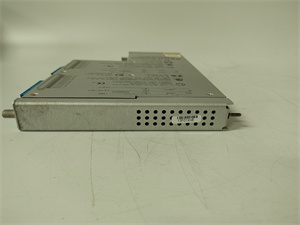
BENTLY 126599-01
3. Product features and technical highlights
Efficient data acquisition and signal conditioning: The 126599 – 01 is engineered to efficiently acquire vibration data from a variety of sensors. In an aerospace gas turbine, where multiple sensors are placed at different locations to monitor blade vibrations, bearing health, and overall shaft stability, the I/O module can simultaneously collect data from these sensors. It then performs advanced signal conditioning, using its configurable filters. For example, the bandpass filter can be adjusted to focus on the specific frequency range where blade – passing frequencies are expected. By accurately conditioning the signals, it ensures that the data sent to the main monitoring system is clean and suitable for precise analysis, enabling more accurate detection of machinery faults.
Configurable tracking filter for variable – speed machinery: With the ability to configure the tracking filter for 35 different operating speeds ranging from 2,400 to 30,000 rpm, the module is well – equipped for applications with variable – speed rotating machinery. In a power – generation gas turbine that ramps up or down its speed depending on the electricity demand, the tracking filter can be adjusted in real – time to follow the changing vibration frequencies associated with different rotational speeds. This ensures that the vibration monitoring remains accurate throughout the entire operating range of the turbine, providing continuous and reliable data for maintenance and operational decision – making.
High – accuracy alarm functionality: The alarm accuracy within 0.13% of the desired value makes the 126599 – 01 highly reliable for triggering alerts when machinery vibrations exceed safe levels. In a large – scale industrial gas turbine, where even a slight deviation in vibration levels can lead to significant damage, this high – accuracy alarm system can quickly notify operators of potential problems. The alert and danger delays, which are adjustable from 0.1 seconds to 60 seconds, allow for customization based on the criticality of the machinery and the time required for operators to respond. For example, in a fast – spinning turbine, a shorter delay may be set for immediate alerts, while in a less critical application, a longer delay can be configured to avoid false alarms.
Flexible termination and installation options: The availability of both internal and external termination options, along with a choice of euro – style connectors and terminal strip connectors, provides great flexibility in installation. In a new monitoring system installation, the internal terminations can be used for a more compact and integrated setup, reducing the amount of external wiring. In an existing system upgrade, the external termination blocks can be easily connected to the existing wiring infrastructure. The variety of cable lengths also contributes to the installation flexibility, allowing the module to be placed in the most convenient location relative to the sensors and the main monitoring unit, whether it’s in a cramped machinery room or a large – scale industrial facility with complex wiring layouts.
Compliance with international standards: Complying with relevant international standards and certifications, including those for hazardous area approvals, the 126599 – 01 can be used in a wide range of industrial environments. In an oil refinery, where the risk of explosion from flammable gases is high, the module’s ATEX/IECEx/CSA (Class 1, Zone 2) approval ensures that it can be safely installed in areas where there is a potential for gas ignition. This compliance not only guarantees the safety of the installation but also ensures that the module meets the performance and quality requirements set by international regulatory bodies.
4. Typical application scenarios
Aeroderivative gas turbine monitoring in power generation: In modern power plants that use aeroderivative gas turbines for electricity generation, the 126599 – 01 is an essential part of the vibration monitoring system. Multiple velomitor sensors and accelerometers are installed on the turbine’s bearings, shafts, and blades to monitor various aspects of its operation. The I/O module collects the vibration data from these sensors and transmits it to the 3500/44M aeroderivative GT vibration monitor. For example, if a bearing in the gas turbine starts to wear, the sensors will detect an increase in vibration levels. The 126599 – 01, with its accurate data acquisition and signal conditioning, will quickly transmit this information to the monitor, which can then trigger an alarm. This early detection allows power – plant operators to schedule maintenance before a catastrophic failure occurs, ensuring the continuous and reliable supply of electricity.
Aircraft engine health monitoring: In the aerospace industry, the 126599 – 01 can be used in the health – monitoring systems of aircraft engines. Aircraft engines operate under extreme conditions, and any vibration anomalies can pose a serious threat to flight safety. By connecting to sensors installed on the engine’s rotating components, such as the compressor blades and turbine shafts, the I/O module can provide real – time vibration data. In – flight, this data can be transmitted to the aircraft’s on – board monitoring system, allowing the flight crew to be alerted if there are any signs of engine problems. On the ground, maintenance teams can use the historical vibration data collected by the module to perform preventive maintenance, ensuring the engine’s optimal performance and reliability for future flights.
Industrial compressor vibration analysis: In industrial settings, such as chemical plants and manufacturing facilities, large compressors are used to pressurize gases or fluids. These compressors often experience high levels of vibration due to their continuous operation and heavy loads. The 126599 – 01 can be integrated into the compressor’s vibration monitoring system to collect data from sensors placed on the compressor’s casing, bearings, and drive shafts. By analyzing the vibration data, maintenance personnel can detect issues like misalignment, bearing wear, or unbalance in the compressor. For example, if the compressor’s drive shaft becomes unbalanced, the increased vibration will be detected by the sensors and relayed to the monitoring system through the 126599 – 01. This enables timely maintenance, preventing unexpected breakdowns that could disrupt production processes and cause significant economic losses.
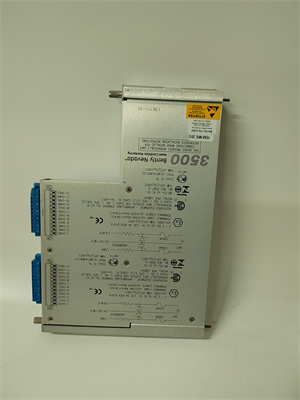
BENTLY 126599-01
5. Installation and maintenance guidelines
Installation: Before installation, thoroughly review the detailed installation manual provided by BENTLY NEVADA. Ensure that the installation area is clean, free from excessive dust, and has a stable power supply. Select a suitable location within the monitoring system’s rack, taking into account the cable lengths required to connect to the sensors and the main monitoring unit. Mount the 126599 – 01 in the designated 1 full – height rear slot, using the appropriate mounting hardware to secure it firmly. Connect the cables from the velomitor sensors and accelerometers to the module’s input terminals, ensuring proper polarity and tight connections. If using external termination blocks, follow the recommended wiring diagram to connect the cables to the euro – style connectors or terminal strip connectors. Route the cables neatly to avoid any interference with other electrical components. In hazardous area installations, ensure that all installation procedures comply with the relevant safety standards, such as proper grounding and sealing of cable entries.
Maintenance: Regularly inspect the 126599 – 01 for any signs of physical damage, such as cracks in the enclosure or loose connections. Check the cable connections periodically to ensure they are free from corrosion and remain tight. Clean the module’s exterior using a soft, dry cloth to remove dust and debris, especially in dusty industrial environments. Verify the accuracy of the vibration data received at the main monitoring unit by comparing it with known reference values or by using calibration equipment. If any signal anomalies are detected, first check the wiring connections within the module and between the module and the sensors. If the problem persists, refer to the troubleshooting guide provided by BENTLY NEVADA. In case of a malfunction, contact BENTLY’s technical support team for assistance. Periodically, check for any software updates or firmware upgrades for the module, as these can improve its performance and functionality.
6. Service and support
BENTLY NEVADA offers comprehensive service and support for the 126599 – 01 I/O module. The 12 – month warranty provides assurance against defects in materials and workmanship. Their global technical support team is accessible 24/7, ready to assist customers with installation guidance, commissioning, and troubleshooting. Customers can access a wealth of online resources, including detailed installation manuals, wiring diagrams, and technical specifications, on BENTLY’s official website. In the event of a product failure, BENTLY maintains an inventory of replacement modules and related components, ensuring rapid replacement and minimizing downtime for industrial operations. Training programs are also available to help customers enhance their understanding of the module’s operation, installation, and maintenance, enabling them to make the most of the 126599 – 01 and ensure its long – term, reliable performance in their machinery monitoring systems.
Full 12-month warranty on all components
Dedicated after-sales support
Same-day dispatch on 1000s of parts
All units are fully tested
- 1. Email confirmation
You will get an email confirming that we have received your enquiry. - 2. Dedicated Account Manager
One of our team will be in touch to confirm your part(s) specification and condition. - 3. Your quote
You will receive a comprehensive quote tailored to your specific needs.
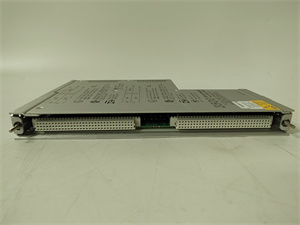
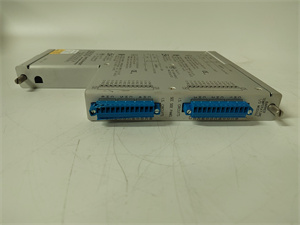
 Full 12-month warranty
Full 12-month warranty Available for dispatch immediately
Available for dispatch immediately We deliver worldwide
We deliver worldwide Full 12-month warranty on all components
Full 12-month warranty on all components